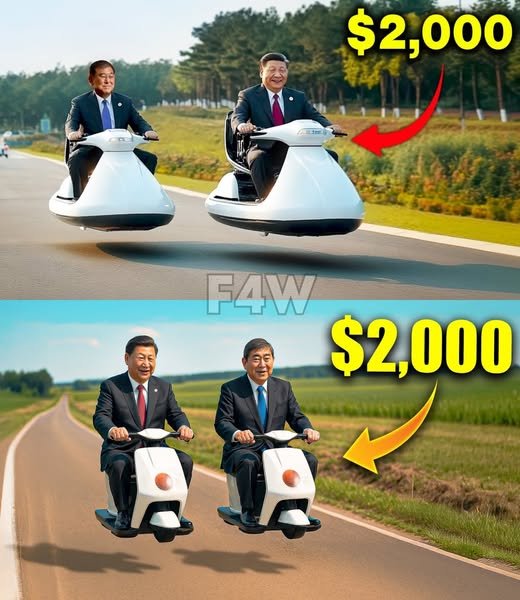In a groundbreaking announcement that has captured global attention, a Japanese company has unveiled a flying
scooter priced at just $2,000. This innovation promises to revolutionize personal transportation, sparking excitement and controversy in equal measure. As cities grapple with traffic congestion and environmental concerns, the emergence of affordable aerial
vehicles could mark a significant shift in how we navigate our urban landscapes.
The concept of flying scooters is not entirely new; however, previous iterations have often been prohibitively expensive and limited to niche markets. The affordability of this new model, combined with its practicality, could democratize access to aerial travel. Imagine zipping over gridlocked streets or bypassing public transportation delays with the ease of a simple takeoff. For many, the prospect of flying to work or leisure destinations is a tantalizing glimpse into the future.
However, this innovation raises several contentious issues that merit serious consideration. First and foremost is safety. The idea of personal flying vehicles evokes both excitement and anxiety. Concerns about collisions, technical malfunctions, and air traffic regulation come to the forefront. With the skies becoming increasingly crowded, how will authorities manage the integration of flying scooters into existing airspace? The potential for accidents raises legitimate fears about whether this technology can be safely implemented.
Moreover, the environmental impact of widespread flying scooter use is a double-edged sword. On one hand, these vehicles could reduce reliance on fossil-fuel-powered cars, contributing to cleaner urban environments. On the other hand, the production and operation of flying scooters may introduce new ecological challenges. Questions abound about the energy sources that will power these vehicles and the carbon footprint associated with their manufacture and maintenance. As we strive for sustainability, it is crucial to ensure that this new mode of transport does not inadvertently create new environmental hazards.
Another point of contention is the socioeconomic implications of flying scooters. While the price tag of $2,000 is relatively accessible compared to other flying vehicles, it still represents a significant investment for many. Will this technology primarily benefit affluent individuals who can afford to purchase and maintain flying scooters? Or will it genuinely enhance mobility for a broader demographic? The risk of exacerbating existing inequalities in transportation access looms large. If flying scooters become a status symbol rather than a practical solution, the promise of equitable travel may remain unfulfilled.
Furthermore, the regulatory landscape surrounding flying scooters is still very much in its infancy. Governments will need to formulate new laws and guidelines to address the unique challenges posed by aerial travel. This could lead to a patchwork of regulations that vary widely from one region to another, complicating the adoption of flying scooters. The potential for regulatory hurdles could stifle innovation and limit the widespread integration of this technology into everyday life.
As excitement builds around the launch of the $2,000 Japanese flying scooter, it is essential to balance enthusiasm with critical scrutiny. While the potential for transforming urban travel is immense, the practical realities of safety, environmental impact, and regulatory challenges cannot be ignored. The vision of soaring through the skies may be appealing, but it must be approached with careful consideration of the broader implications.
In conclusion, this innovative flying scooter represents a fascinating leap forward in transportation technology. It has the power to change how we think about travel, but it also invites a complex dialogue about safety, sustainability, and equity. As we stand on the brink of a new era in personal mobility, the conversation surrounding this technology will be just as important as the invention itself. The future of travel may very well be in the skies, but we must ensure that it is a future that benefits everyone.



